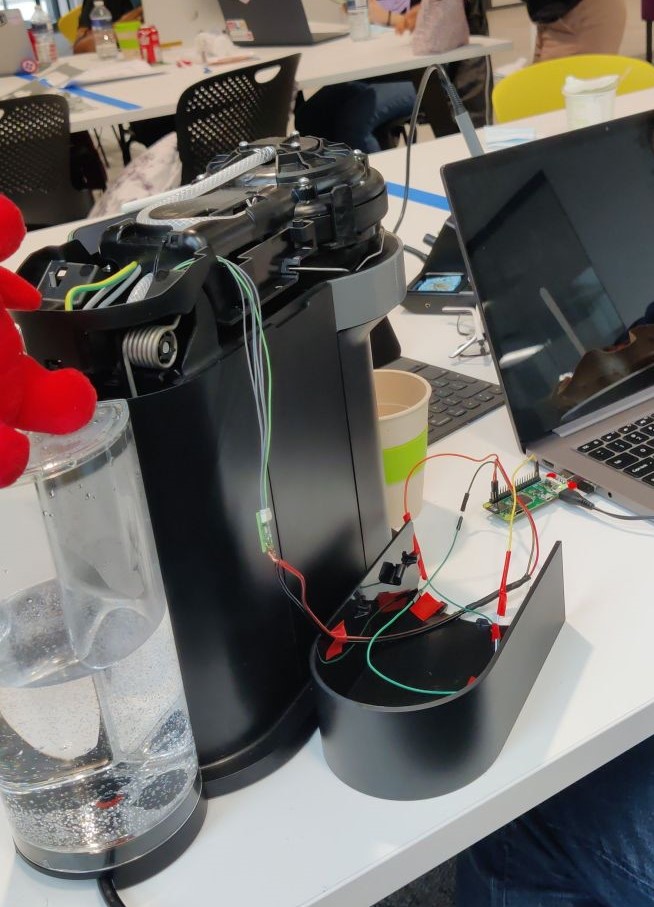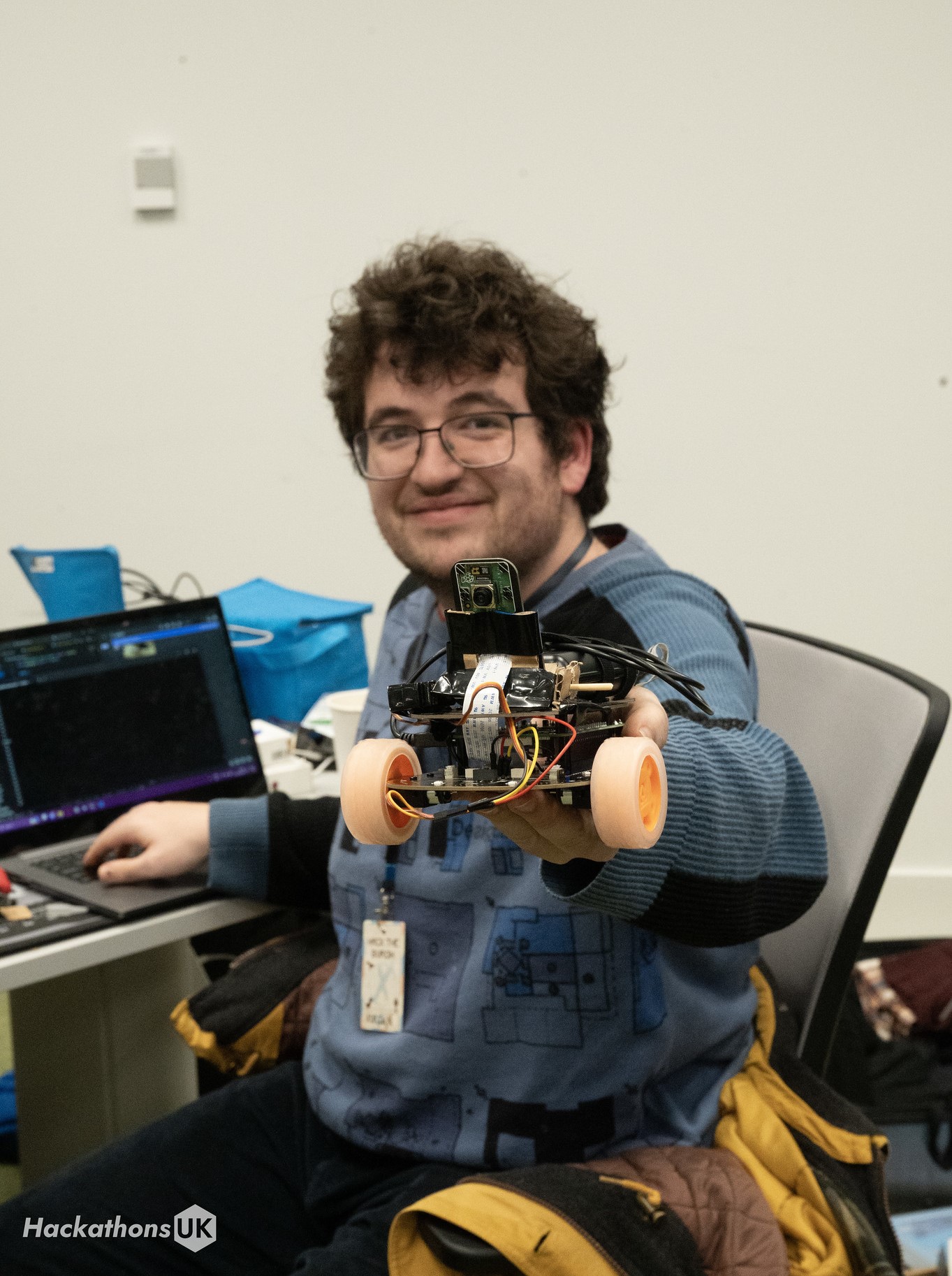Hackathons
Hackathons are 24 hour programming events, where you and your team of up to 4 hackers work on building a fun and interesting project, which are then judged for prizes. I've participated in many, and here you can see some of my more personal summaries of each one. Hover over the hexagon to see what prize the project won! If you're more curious about the tehcnical details check my Devpost. Give them a click for more detail!
"Breadboard" | AstonHack10
While a tad disastrous, we had a great time modding a toaster to print images onto bread at AstonHack10. The project relied on a £4 toaster from a charity shop, as well as some 3D printed bits. We painstakingly rewired the heating elements to instead act like pixels we could individually actuate through a relay board, and built a system to lift and drop the bread. Suprisingly, the project actually came along really well, and everything worked as expecdted. Sadly the resolution was very poor, and we were never able to make a really good image, but it was still fun. Video here: here!.
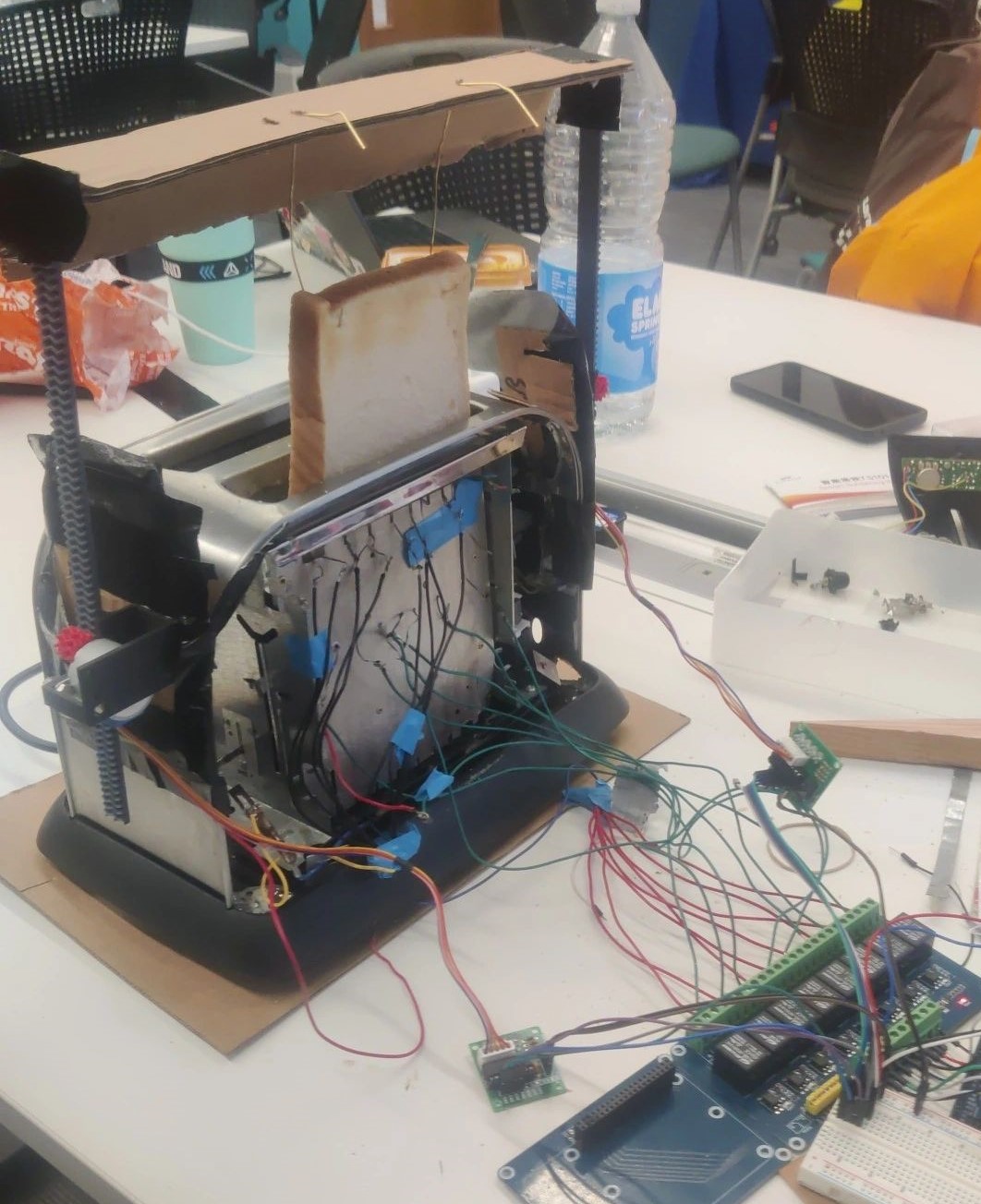
"Dial-Up Detective" | RoyalHackaway V8
This time we were at Royal Holloway with some more old Hardware! We used an original 1969's rotary telephone, and incorporated it into a game! In the game you played the role of a detective, using the phone to call up suspects and sus out the killer! Unsurprisingly, working with 60 year old analogue tech is hard. We couldn't make the phone ring, since that required alternating 45-90V... dangerous. However, we did play single tones, and fed the microphone back through the speaker. Despire all this, the dial worked perfectlY! You could call people in the unity game by dialing the numbers! Emily also made a really cool old-style GUI that displayed the story beats and text from the calls. You can find a video of it working here!.
This hackathon was also really special: our first true Nottingham Sweep! All five of our teams won a prize!
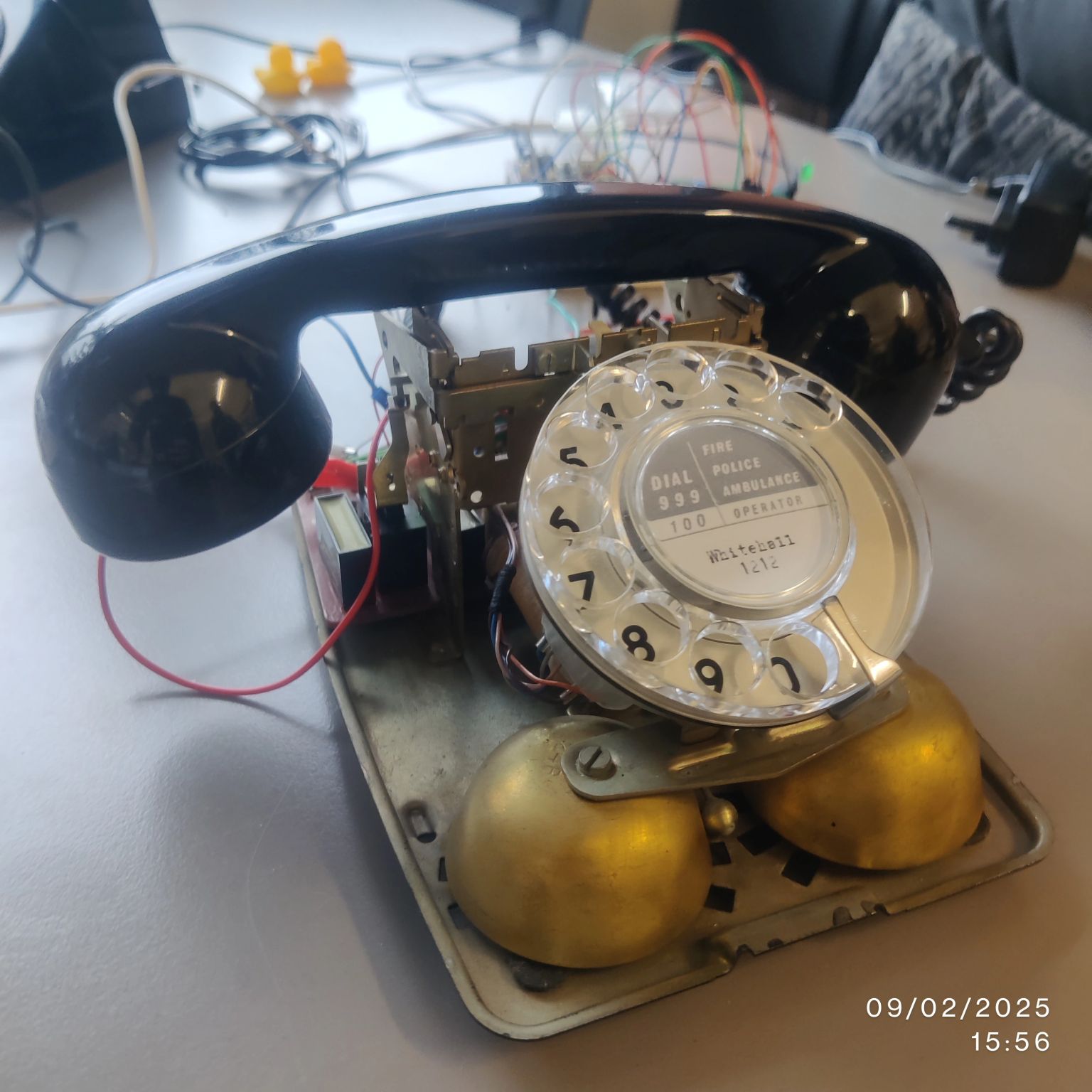
"A1 Grand Prix" | DurHack2024
Hackathon #10 back in Durham! We wanted to make this one special, so we gave ourselves a big challenge. Daudi had some old Anki Overdrive cars and we wanted to make a "Fully Autonomous F1 Stream". Luckily for us, we were able to get the cars more or less working in the first 4 hours, and we could focus on all the really cool stuff around the cars for the other 20. This included a foam tunnel and banked corners, starting lights with a F1-style start sequence, a waving flag on the last lap, multi-camera broadcast that would change views depending on where the cars were, a track-position overlay, and to finish it all off, a locally running LLM that took the events on-track and commented on it like Crofty. This hack was so fun, and it was a shame that the judges didn't really look our way. Either way, this one is best explained in videos, so please have a watch Here!
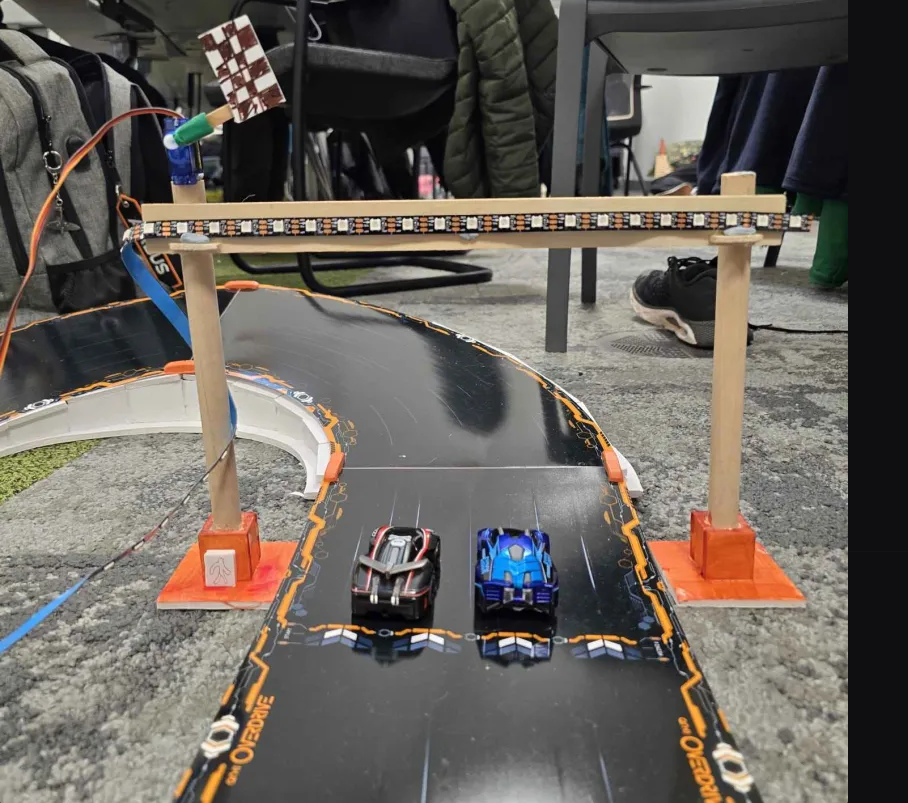
"Wotsitbot" | HackTheBurghX
Apparently it takes crossing the entire country for someone who loves robots to actually make one at a hackathon. This project was insane. I built and coded up this differencial drive robot from scratch using another teams rasperry pi, some parts, and lots of cardboard. My teamates created a backend and frontend that allowed a user to pilot the robot through a computer, and click on objects, that would then be identified using a vision model. We then took that thing, and scraped it's wikipedia file to give the user some information about it. We did RAG before it was cool! We also made a terrifying UML diagram to explain how the jank all worked, which you can find on my Devpost.
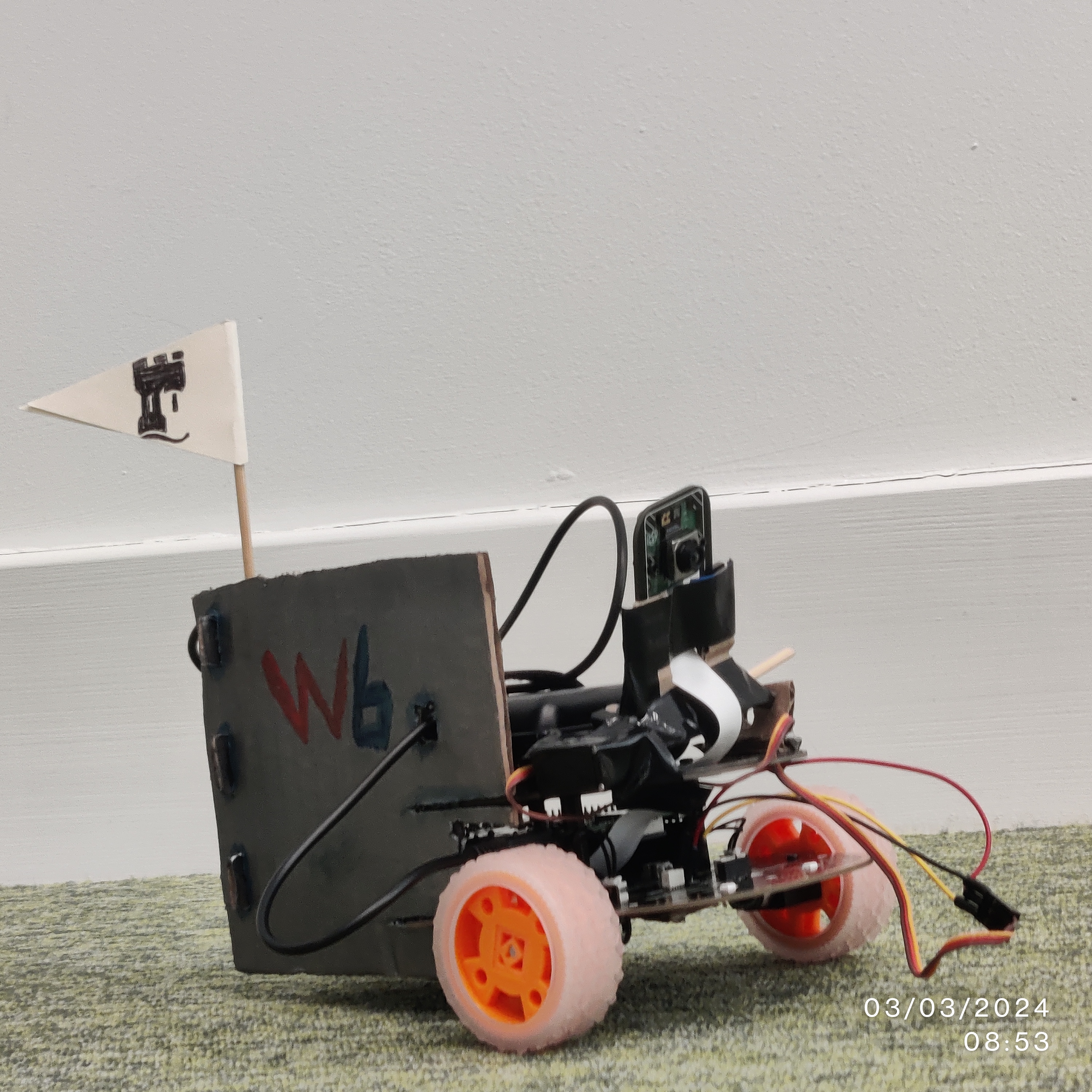
"IP over Semaphore" | HackSussex2024
We returned to Sussex, and worked on exactly the same table. This time we wanted to create an IP between two computers using just the contemporary semaphore flag system. Each computer had a pair of flags, which moved using motors, and a camera. I used computer vision to read the flags. Then, some magic rust code made by my teammates created an actual network interface between the computers, at a speed of 0.02MB/s! We were able to run a ping command (mind, not in full, this would have taken over 2h!). We were able to perform the easiest man-in-the-middle attack in the world, by literally standing between the computers with our own flags!
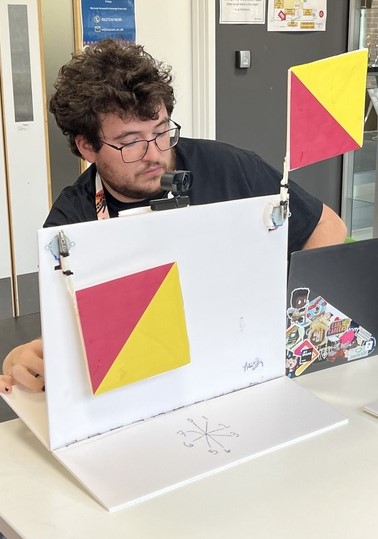
"Human Plant Interaction" | LanHack23
Our first hack after LLM's became common-use in Hackathons. We carried a house plant to Lancaster, and stuffed it with all kinds of sensors! I built a fuzzy logic system (I had just finished that module at UoN!) to take sensor readings, and produce a "happyness" rating of the plant for lighting, moisture, etc. these ratings were then fed into a locally running Llama LLM to give our plant a voice! I also built it some eyes that would change depending on how the plant was feeling. It ended up being very sassy and rude, which the judges found very funny!
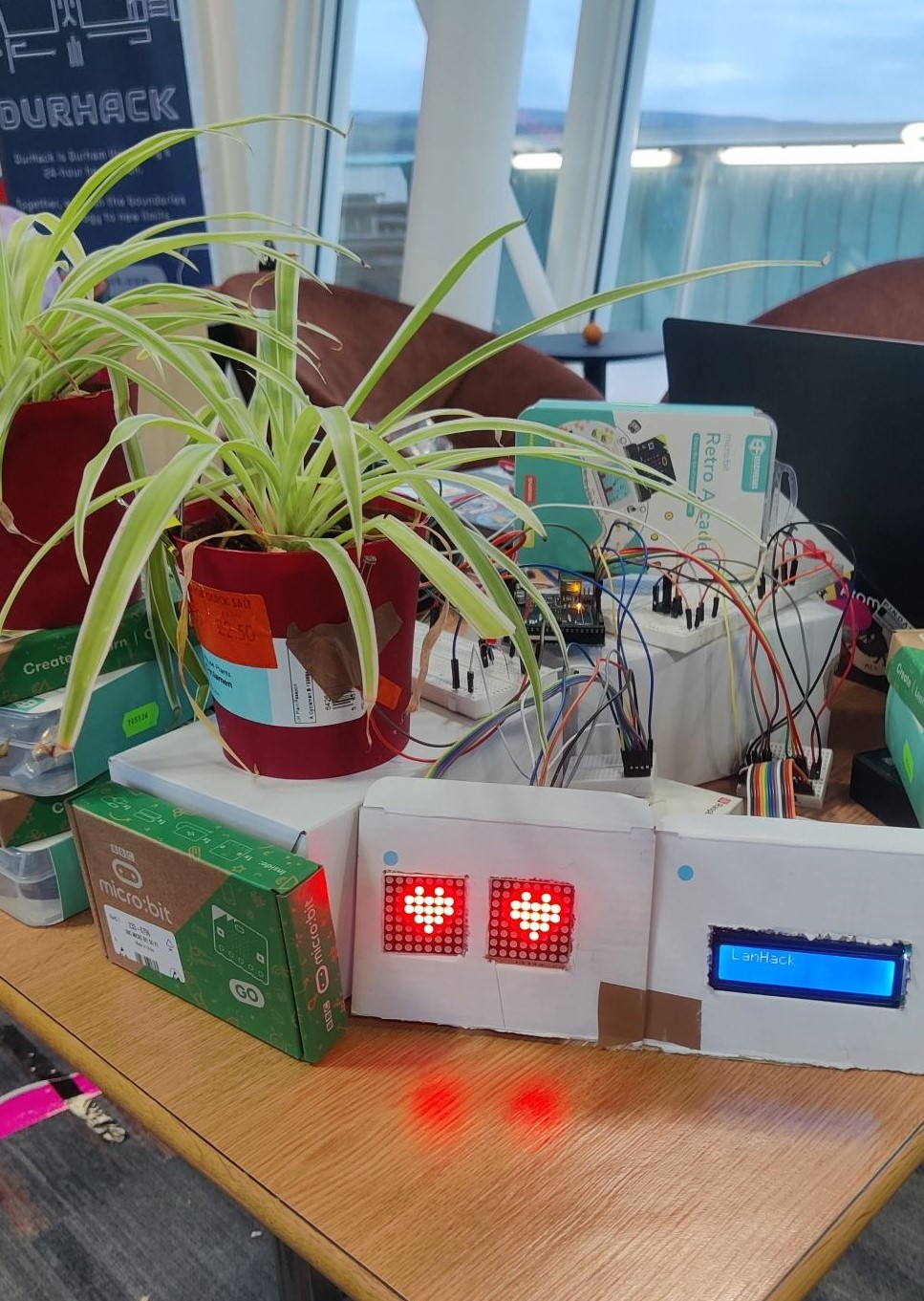
"Analogue Automata" | HackSussex2023
Analogue Automata is likely the most technically challenging hack I've ever got working. We took a Sony TCM-737 Cassete-Corder from 1980, and used the recording and playing to simulate a functioning (fixed-tape) Turing Machine! This gave us a head that could travel along a tape, reading or writing the values of the tape. We had to listen to Band on the Run over 50 times when we were debugging!
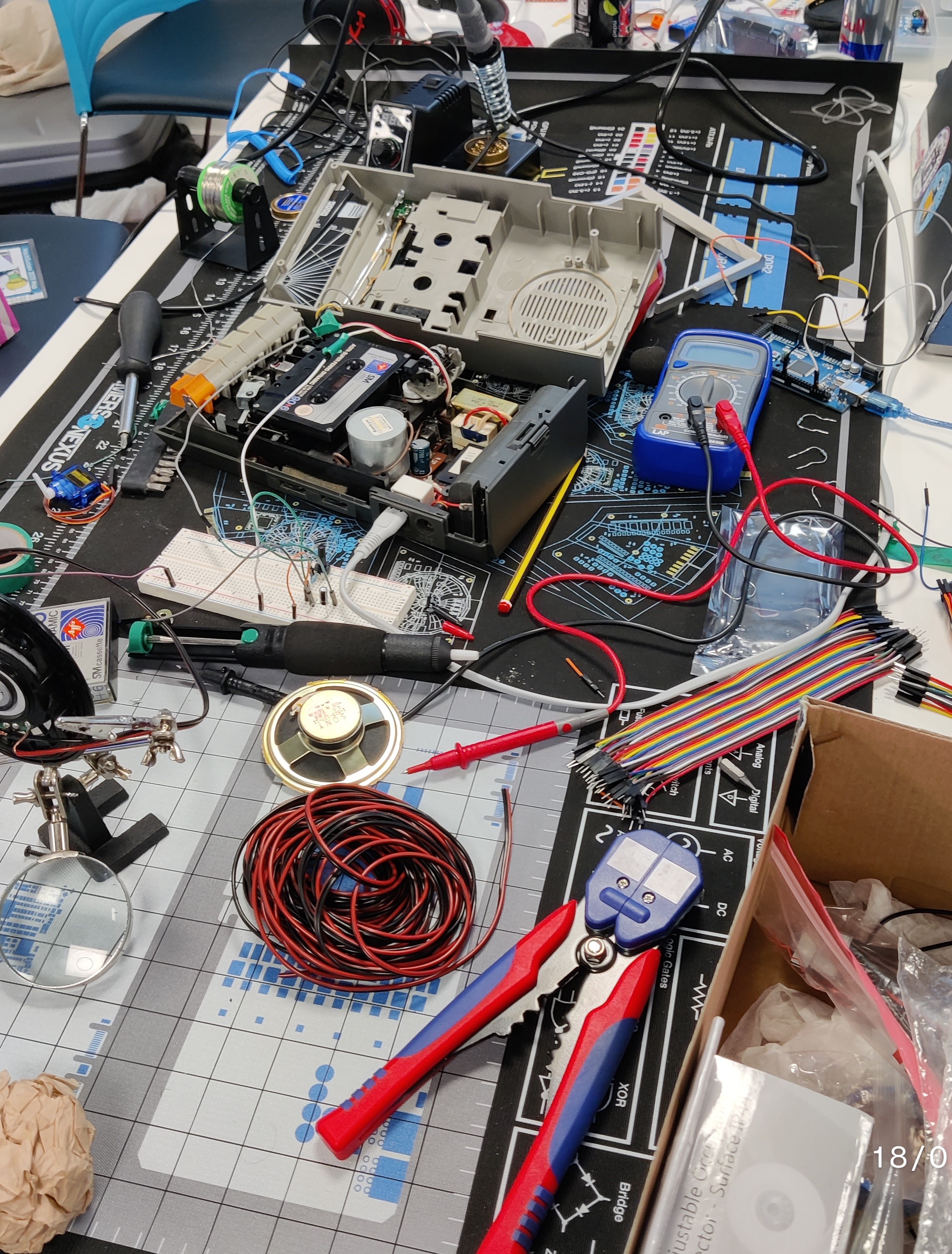
"Autodice" | HackNotts23
A project that I desperatly want to revisit now that I know more computer vision. The idea was to use a webcam, taped to a desk lamp, to read the values of dice rolled in a tray. Sadly this was a greater challenge than expected, as the dice were all different colours and shapes.
"Linguini" | HackTheMidlands 7.0
For this hackathon, we wanted to do something useful, so we set out to build a mobile app that could take a picture of your fridge, and suggest recipes to use leftover ingredients up. This was before the times of the easy to use vision models so we had to take around 500 pictures, training a custom (And terrible) YOLO model with them. My teammate made a simple flutter app. While this project was a bit boring, the prize was two Arduino Mega 2560s and lots of electronic compontents. You'll spot these in almost every hack after this one.
"Clooney" | DurHack2021
My first Hackathon! We took a broken Nespresso Vertuo machine, and implemented the RFS April Fools 1998: RFS-2324: HTCPCP protocol, allowing intercommunication between computers and coffee machines using TCP packets. The whole weekend was a bit crazy, and it's one of my favorite hackathon stories.
